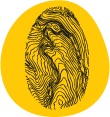
Assessing the impact of urban growth and rural land use transformations at different scales in a cross-border situation in Northern Namibia and Southern Angola
The Okavango catchment is a hot spot of accelerating land use change. In particular, climate predictions and demographic developments are expected to increase pressure on resources and a growing utilization of ecosystem services and functions. Land use conflicts, the sustenance of precarious livelihoods, deforestation of woodland savannas, upstream-downstream water issues and human-wildlife conflicts are among the processes that are characteristic of management challenges in the region.
In the Kavango region of Namibia, a unique cross-border situation exists that allows assessing the impact of different socio-economic settings, including political history and local land management. We use a set of multi-temporal Landsat-5 TM and -7ETM+ data sets covering the period from 1989 to 2010 to assess the contrasting development of resource utilization on both sides of the Okavango River. Reflecting the high spectral variability in surface types, support vector machine (SVM) classification is used to map major land use types. SVM uses kernel functions to map non-linear decision boundaries in the original data space into linear ones in a feature space of higher dimensionality (Huang, Davis et al. 2002) and is particularly useful when differentiating complex spectral classes with small numbers of training data. To further discriminate Savanna ecosystems, we use Iterative Spectral Mixture Analysis (ISMA) (Rogge, Rivard et al. 2006) that estimates the abundance of prevailing materials present in each pixel as an independent linear combination of reference spectra. To assess scale-dependencies of observable phenomena, MODIS and Quickbird data are employed. These provide context at a coarser scale (broad vegetation/ land use categories classified using phenology descriptors derived from 16-day EVI composites) (Jönsson and Eklundh 2004) and explanatory details (better understanding of mixed spectral signatures at Landsat resolution) at finer resolutions, respectively.
Results illustrate the strong gradient in land use intensity and resource consumption between Angola and Namibia. In Angola, residential and agricultural development has only recently started after the end of the civil war. Noteworthy is the strong and interconnected urban growth on both sides of the river. The area around Rundu has constantly been evolving to become Namibia's second largest city, also functioning as a hub of transborder commerce and development of opposing Calai. This trend is affecting adjacent settlement areas and causing widespread conversion of woodland Savannahs to agricultural land or being used for timber extraction.
Figure 1 shows the resulting landscape pattern as derived from Spectral Mixture Analysis (SMA) for an image acquired in April 2010.
Resulting change trajectories for three decades haven been linked to census and household survey data. With regard to how resources are being utilized, a strong overlap between physical, (potentially) monetary and cultural uses was noted (Pröpper, Falk et al. 2013; Rieprich 2013). This is important to understand drivers of land use change in the region and to suggest management scenarios that aim at reconciling different ecological services and functions, in particular those safeguarding livelihoods and preserving biodiversity and clear water.
Huang, C., L. S. Davis, et al. (2002). "An assessment of support vector machines for land cover classification." International Journal of Remote Sensing 23(4): 725-749.
Jönsson, P. and L. Eklundh (2004). "TIMESAT - a program for analysing time-series of satellite sensor data." Computers and Geosciences 30(833-845).
Pröpper, M., T. Falk, et al. (2013). "Partly susistend household economies and modern consumerism in the Namibian Kavango: Assets, income, expenditure and socio-economic stratification." Biodiversity & Ecology in print.
Rieprich, R. (2013). Mapping Environmental Valuations. An Ethnographic Case Study of Ecosystem Services and Landscape Values in Kavango, Namibia. Social and Cultural Anthropology. Hamburg, University of Hamburg. Master of Arts: 111.
Rogge, D. M., B. Rivard, et al. (2006). "Iterative spectral unmixing for optimizing per-pixel endmember sets." IEEE Transactions on Geoscience and Remote Sensing 44(12): 3725-3736.
